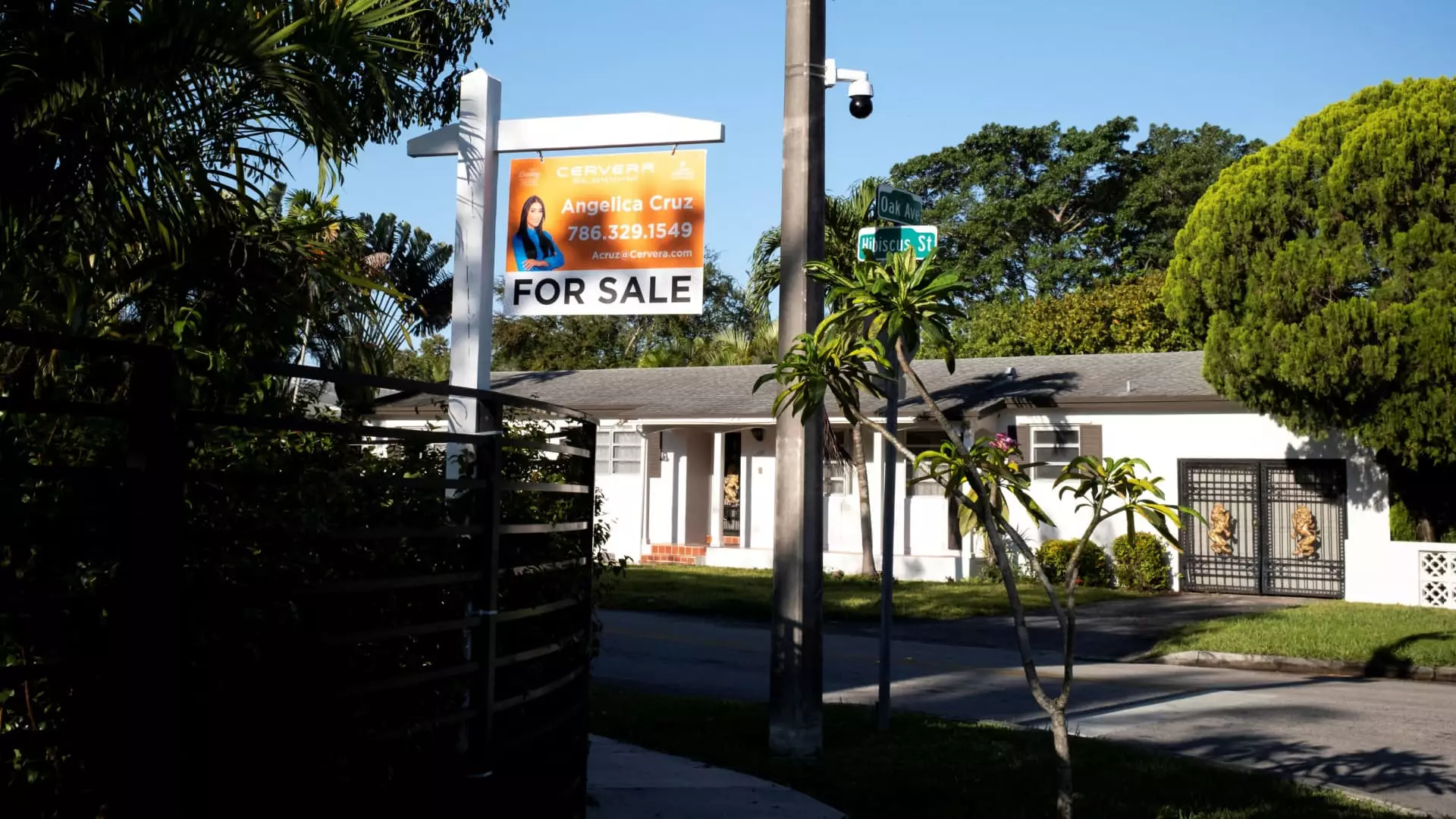The current state of the housing market is an unfortunate reflection of both economic uncertainty and relentless mortgage rates that continue to soar. As we plunge into spring 2023, the National Association of Realtors (NAR) reports a shocking drop in previously owned home sales—down 5.9% from February, stagnating at 4.02 million units. This marks the slowest pace for March since 2009, a grim indicator for buyers and sellers alike. As rates hover above 7% on the 30-year fixed mortgage, affordability has become a crisis for many potential homebuyers. It’s ironic that while homeownership is often touted as a cornerstone of the American dream, these soaring rates have turned it into a near-impossible feat for many middle-class families.
Regional Disparities: A Façade of Hope
Though some regions, particularly in the West, have seen fluctuations—albeit minor—in sales, this hardly paints a rosy picture overall. Home sales in this affluent region plummeted by more than 9% month-to-month, with the only silver lining being a year-over-year increase driven primarily by robust job growth in the Rocky Mountain states. It’s a sobering reality when these pockets of stability are overshadowed by widespread decline elsewhere. The idea of a summer housing revival seems distant when you consider the mounting difficulties faced by the average American.
Housing Mobility: An Alarming Trend
What’s perhaps more alarming is the insight shared by NAR’s chief economist, Lawrence Yun: the historical lows in residential housing mobility could foretell more extensive economic stagnation. When fewer people are willing or able to move, it disrupts not just local housing markets, but also national economic mobility—an essential component of a thriving society. It’s crucial to recognize that housing is more than just numbers; it profoundly influences community connectivity and economic opportunities. These trends signal that we are at risk of entrenching ourselves in an economic quagmire where upward mobility becomes increasingly elusive.
Inventory vs. Demand: A Frigid Market
Interestingly, despite the decline in sales, the housing market is swamped with listings, yet the supply is unable to promote a healthy equilibrium. The available inventory surged by nearly 20% to 1.33 million units by the end of March. Nonetheless, this is not the hopeful sign one might expect. The current sales pace indicates only a 4-month supply, short of the ideal 6-month threshold that suggests balance between buyers and sellers. As this imbalance persists, the market faces downward pressure on home prices, further complicating the housing recovery narrative.
It’s essential to realize that a minor annual increase in home values—now limited to 2.7%—does little to inspire confidence. Buyers are simply becoming more discerning, and the fizz of demand is now tinged with caution. When we break down the numbers, the reality is stark—there’s a deeper malaise in the market that can’t be ignored.
First-Time Buyers: An Unforgiving Landscape
The plight of first-time buyers serves as a microcosm of wider economic struggles. Making up only 32% of the market as of March 2023, they remain trapped in a cycle of frustration. Historically, they’ve constituted about 40% of buyers. This underwhelming market participation reflects a landscape that has become increasingly unforgiving to those trying to step onto the property ladder. With the number of all-cash sales dropping and the stakes raised for investors, the future looks bleak for new entrants.
Even more alarming are reports of canceled contracts on the rise in March, a trend likely to escalate given the stock market volatility experienced in April. Economic uncertainty feeds into the housing market like a double-edged sword, and the implications of this trend cannot be overstated. The situation isn’t just grim; it holds broader societal consequences that extend far beyond home sales and real estate profits.
The wheels of the American dream may be turning, but right now, they seem stuck in the mud, leaving prospective homeowners wondering if they will ever find their way to that front porch swing or backyard barbecue. The desire for change is palpable, yet the economic realities suggest that we may be facing a long and arduous road ahead.

